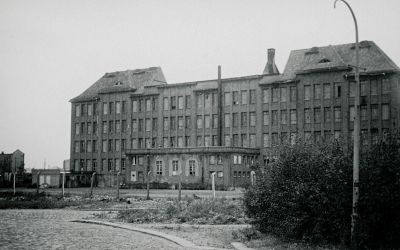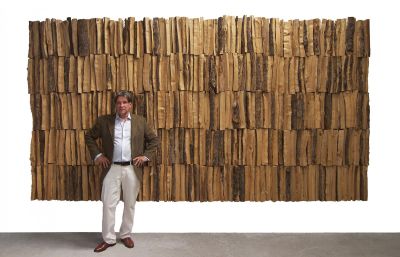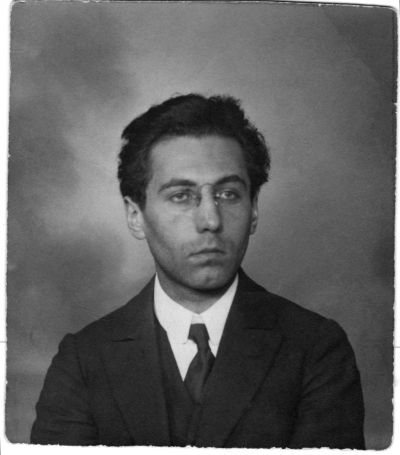Wojciech Kossak: Memoirs, 1913












After one year of service, Kossak left for Paris in 1877 - the author seldom mentions concrete dates, and the reader is therefore forced to deduce them from the context - on the advice of his father, to complete his painting studies at the art schools of Léon Bonnat (1833-1922) and Alexandre Cabanel (1823-1889). One of his first visits was to a friend of his father, Count Konstantin Branicki and his wife,[9] who had "made their home the meeting point of Polish circles", and invited a group of Polish exiles every day to morning tea, as well as distributing alms to petitioners. They also provided financial support to the Polish school of Batignolle, a project run by Brother Xavier, and to the Polish church in Paris, Notre-Dame de l'Assomption (p. 61 f.). Through the intervention of the Polish painter Henryk Rodakowski (1823-1894) Kossak met Bonnat, who accepted him into his private painting school. Anyone hoping to gain historical insights into Kossak's six years of studies in Paris will only find two anecdotes described in detail in the corresponding chapter. These are his admission as a newcomer to the school of painting (p. 64-67), accompanied by a variety of jokes, and the unsuccessful hanging of a portrait of a lady painted by Kossak in the Paris Salon (p. 69-74). Kossak's return from Paris to Krakow in 1884, his marriage, the opening of his own studio and the following nine years of artistic activity there are left unmentioned in the "Memoirs".
However, in the chapter entitled "Gödöllő" he reports on the first presentation of a pictorial motif in the Künstlerhaus in Vienna in 1886, which was based on his experiences during his military service (p. 77). The life-size painting of a bayonet attack by an infantry regiment with a mounted officer and a trumpeter on horseback, depicted in the book as a black and white plate (Fig. 3), aroused the interest of Emperor Franz Joseph I, who opened the exhibition and asked to get to know the painter of the picture during a tour. Kossak, in the uniform of a Ulan lieutenant, explained to the emperor his roots as the son of Juliusz Kossak, elucidated his military and artistic career and provided him with information about his painting. The purchase of the painting, which later hung in the Emperor's study in the Hermes villa in Lainz, led to an invitation to a par force hunt in Gödöllő, the royal Hungarian hunting residence north-east of Budapest. Of course Kossak, "being a thoroughbred Pole, the finest cavalry material from birth", made an excellent figure in the hunt and was heaped with praise by the Emperor (p. 89). Today, the page-long descriptions of hunting with horses and dogs will only be of interest to hunting historians and connoisseurs of the Danube Monarchy.
From 1893 Kossak worked alongside the Lviv painter Jan Styka (1858-1925) on the Panorama of the Battle of Racławice, which was presented to the public the following year at the National Exhibition in Lviv. The success of this panorama painting[10] moved the Polish painter Julian Fałat (1853-1929)[11], who had been living in Berlin since 1886 and worked for Emperor Wilhelm I, to offer Kossak the chance to work on another panorama painting. They jointly agreed on the theme: "The crossing of Beresina by Napoleon's troops". While Fałat was responsible for the construction of a suitable building in Berlin and the technical preparations, Kossak travelled to Lithuania "to acquaint himself with the banks of the Beresina" together with the painters Michał Gorstkin Wywiórski (1861-1926) and Kazimierz Pułaski (1861-1947)[12], a cousin of Kossak. From the War Ministry in Vienna he brought large amounts of literature to study the historical basis.
The chapter on "Berlin" in Kossak's "Memoirs", which begins with the work on this panorama, covers a period of seven years and comprises 35 pages of the book. Kossak himself describes this section of his life as perhaps the most interesting.[13] Probably because of the hostile reactions from Poland, it was the author's special wish to publish the memoirs during his lifetime in order to be able to personally counter any "accusation of lies or even an excess of fantasy" (p. 93 f.).
The building for the panorama painting was erected not far from the Teltow Canal in Herwarthstraße in the Berlin suburb of Lichterfelde opposite the building of the Imperial General Staff. A scaffolding and ovens were erected inside. On four large canvases, corresponding to the points of the compass, Fałat applied the colours of the landscapes according to the position of the sun, and then travelled to Krakow because he had been appointed director of the School of Fine Arts/Szkoła Sztuk Pięknych as successor to the late Jan Matejko (1838-1893). Wywiórski transferred the snow landscapes designed in watercolours by Fałat to the canvases, while Kossak, supported by Pułaski, designed and executed the figurative compositions.
[9] This apparently refers to the younger brother and heir of Count Xavier/Franciszek Ksawery Branicki (1816-1879), an enormously wealthy exile Pole who supported patriotic activities in Poland as well as Polish emigrants and institutions in France.
[10] In 1946 the panorama of Racławice was taken from Lvov/Lemberg, which had been part of Soviet Russia since 1944, to Wrocław/Breslau. Today it can be viewed in a building erected especially for the purpose in 1985. See also: https://mnwr.pl/category/oddzialy/panorama-raclawicka/ and https://www.youtube.com/watch?v=bLNoOpOIXTw
[11] For an extensive biography of Julian Fałat on this portal in the Encyclopaedia Polonica, see, https://www.porta-polonica.de/en/node/599
[12] For an extensive biography of Kazimierz Pułaski on this portal in the Encyclopaedia Polonica, see: https://www.porta-polonica.de/en/node/739
[13] Kossak's stay in Berlin also resulted in over 400 letters to his wife in Krakow, in which the painter wrote about Berlin events almost every day. Kossak's letters contained in various libraries were edited in two volumes in Polish by Kazimierz Olszański (publisher:): Wojciech Kossak. Listy do żony i przyjaciół (Eng: Letters to my wife and friends), Krakow 1985.






















































































